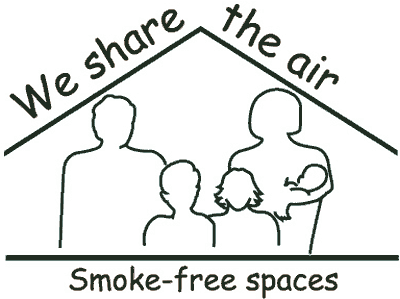Costly cigarettes and smoke-free homes
Researchers at the University of California, San Diego School of Medicine say high-priced cigarettes and smoke-free homes effectively reduce smoking behaviors among low-income individuals – a demographic in which tobacco use has remained comparatively high.
Writing in the October 17, 2013 issue of the American Journal of Public Health, principal investigator John P. Pierce, PhD, professor and director of population sciences at UC San Diego School of Medicine, and colleagues found that expensive cigarettes - $4.50 or more per pack - were associated with lower consumption across all levels.
“Living in a state where the average price paid for cigarettes is low ($3.20 or less per pack) means that all smokers, regardless of income, will smoke a lot more than those who live in a state with higher prices,” said Pierce. “This is the case for those living below the federal poverty level as well as for the wealthy.”
When smokers agreed to a smoke-free home, not only were they more likely to reduce their smoking but, in addition, if they quit, they were less likely to relapse.
“Price is a deterrent to smoking,” said Pierce, “but successful quitting (90 or more days) was associated in this study only with a smoke-free home.”
The challenge to anti-smoking groups is that low-income smokers are less likely to adopt a smoke-free home environment. Pierce offered several possible explanations: “First, there’s a higher prevalence of smoking in people with lower incomes, which means that there will be more spouses who smoke as well. When both adults smoke, there is much lower motivation to introduce a smoke-free home. Also, social norms against smoking have historically been lower in those with lower incomes.
 “No one is mandating a smoke-free home,” Pierce continued. “We are telling people that if they really want to quit, then introducing a smoke-free home will help them be successful. This study supports the current policy of increasing (cigarette) prices and building social norms that protect against secondhand smoke. These policies will reduce consumption among all smokers – reducing potential harm – and the ensuing smoke-free homes will help smokers quit successfully.”
“No one is mandating a smoke-free home,” Pierce continued. “We are telling people that if they really want to quit, then introducing a smoke-free home will help them be successful. This study supports the current policy of increasing (cigarette) prices and building social norms that protect against secondhand smoke. These policies will reduce consumption among all smokers – reducing potential harm – and the ensuing smoke-free homes will help smokers quit successfully.”
The findings are derived from the 2006-2007 Tobacco Use Supplement to the Current Population Survey, a monthly nationally representative cross-sectional survey conducted by the U.S. Census Bureau. The researchers analyzed three sets of supplement data containing responses from more than 150,000 participants aged 18 and older who self-reported both income and smoking habits.
Maya Vijayaraghavan, MD, assistant clinical professor in the Department of Family and Preventive medicine and the study’s first author, said one potential avenue for intervention was to increase regulation of secondhand smoke in public housing.
“This may change norms around smoking among low-income populations living in public housing,” Vijayaraghavan said. “What is important is that clinicians need to emphasize social norms concerning tobacco use and should encourage and discuss strategies for adopting smoke-free homes among all smokers. Additionally, there is a lot of interest in raising cigarette price to reduce smoking. While we have evidence that moderate increases reduce smoking behavior in all income groups, it is important to match such a policy with support to help lower income smokers to quit successfully.”
###
Study co-authors include Karen Messer and Martha M. White, both at UC San Diego Moores Cancer Center.
Funding support for this study came, in part, from UC Tobacco-Related Disease Research Program grants 18CA-0134 and 21RT-0135.
###
Scott LaFee
slafee@ucsd.edu
619-543-6163
University of California - San Diego